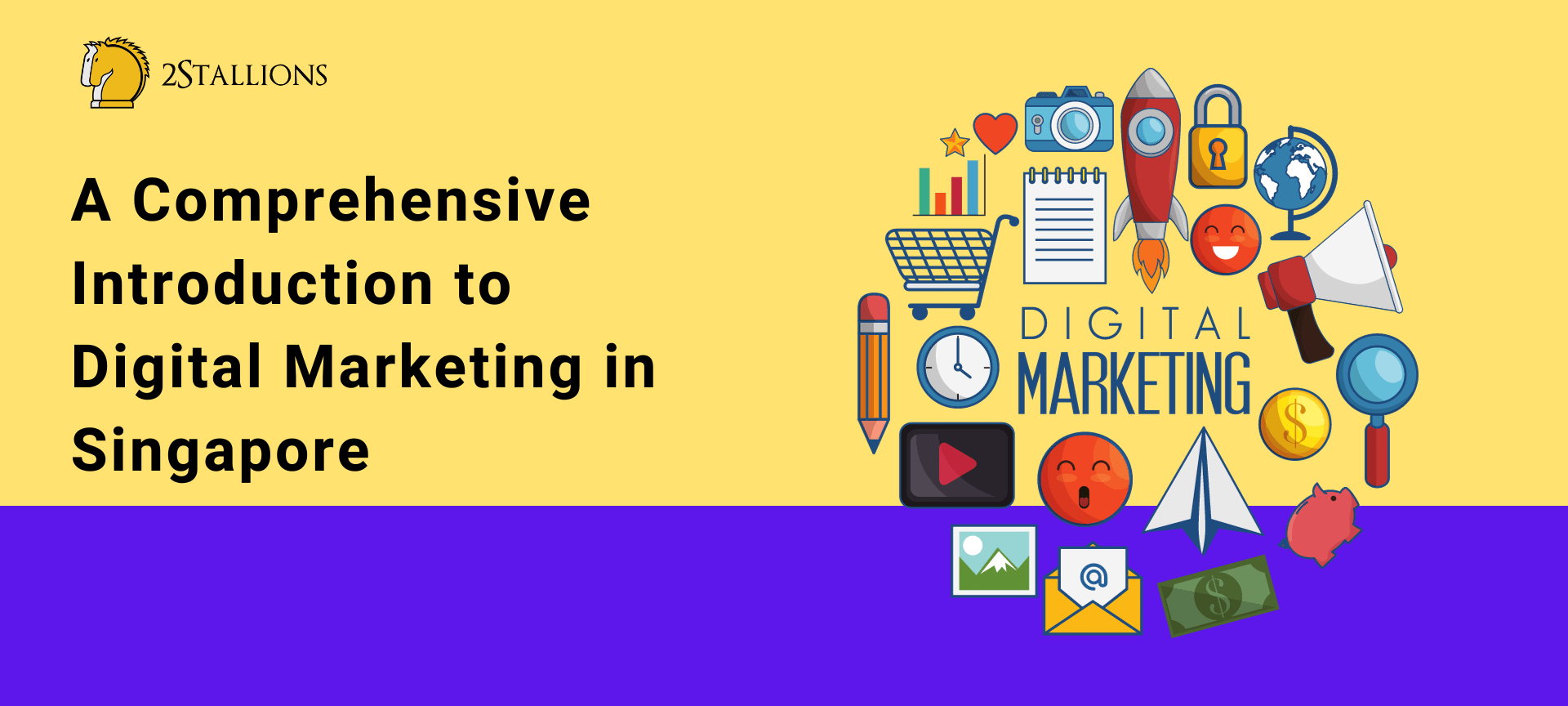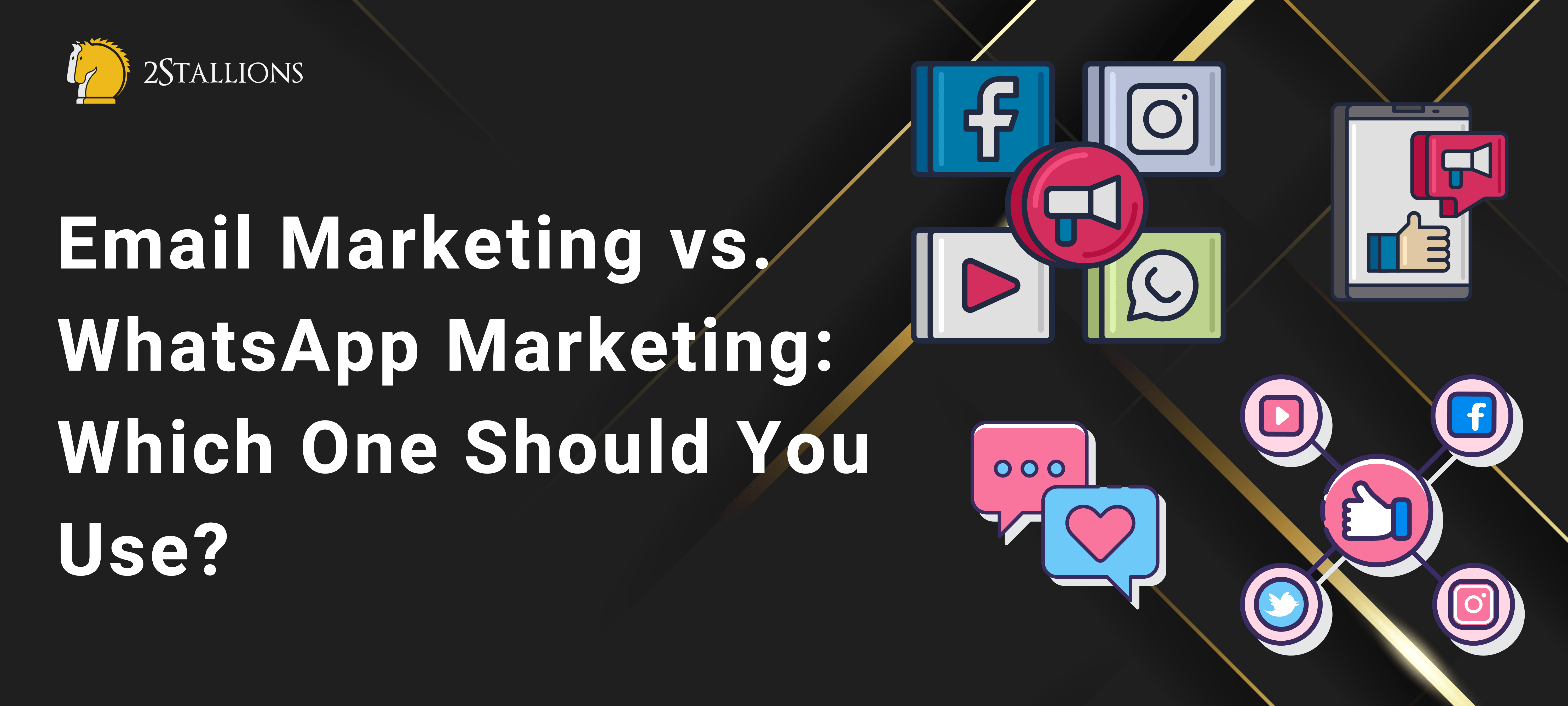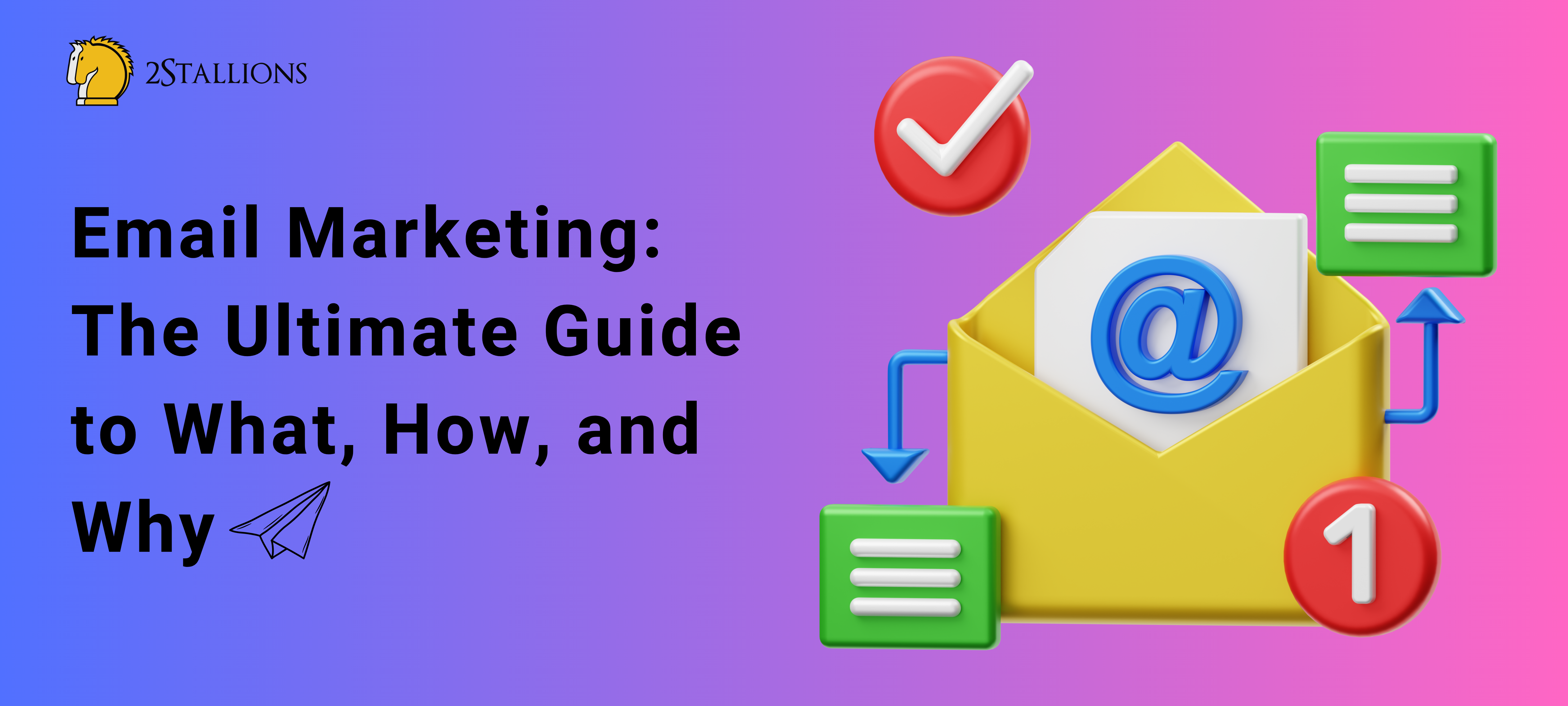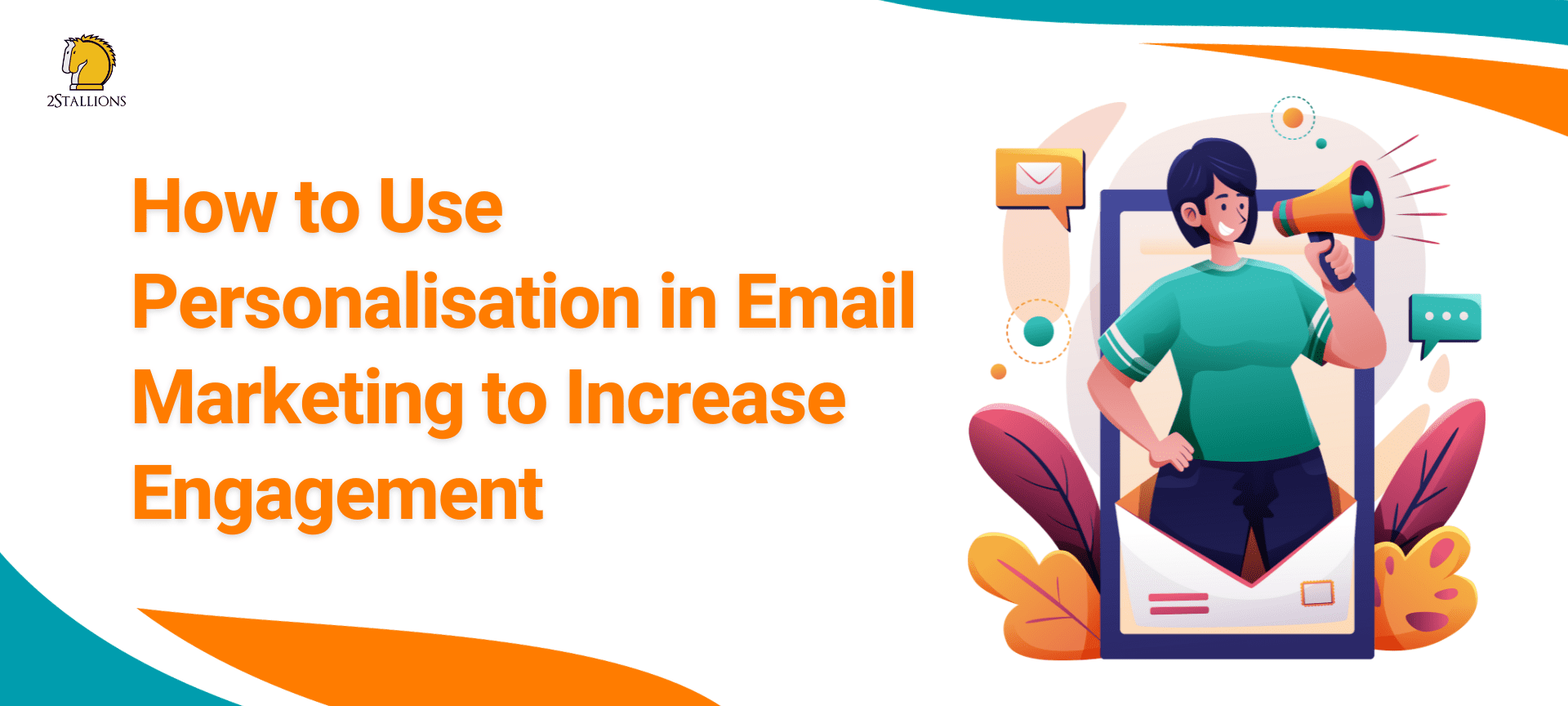Content
SHARE
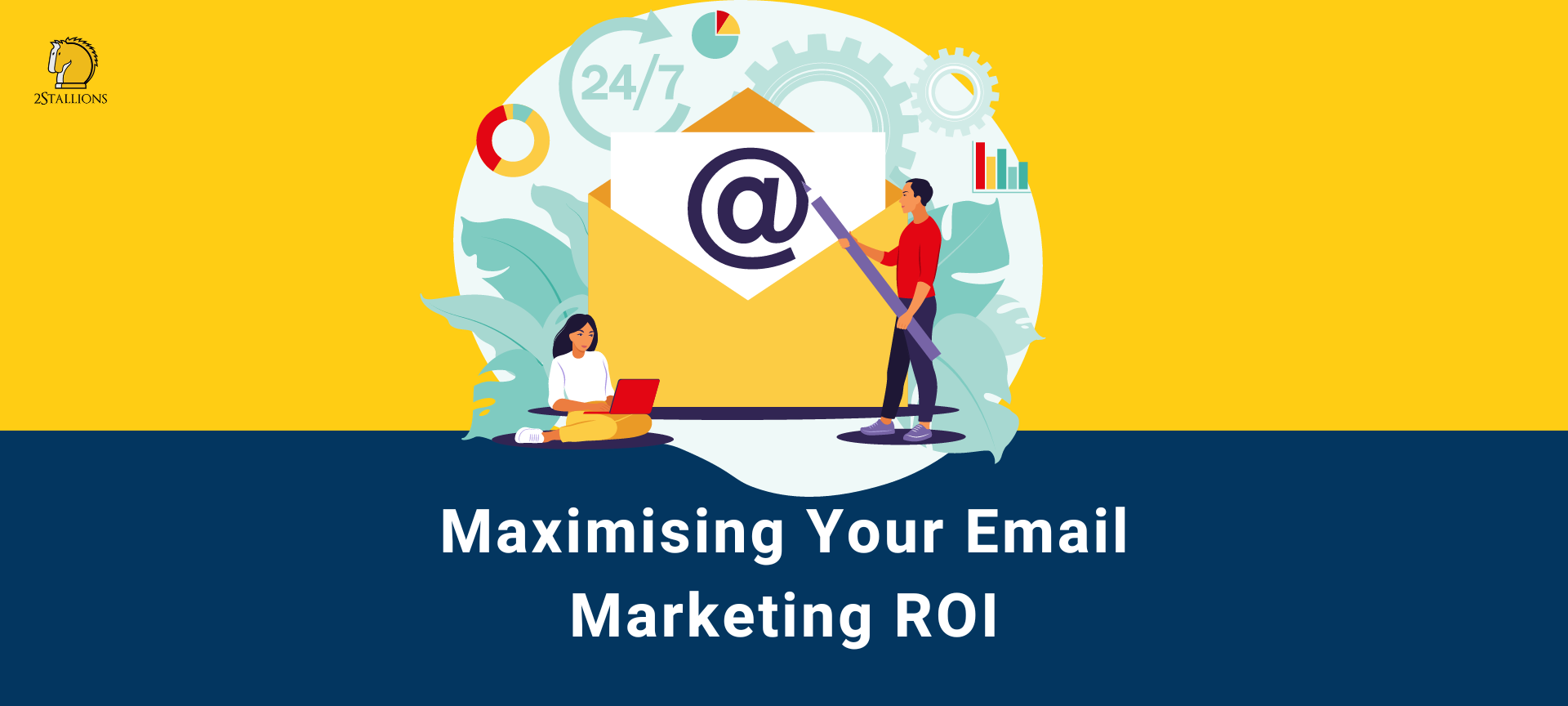
Do you need to see the desired returns before investing time and resources into email marketing? Any business must understand how to maximise your email marketing ROI (Return on Investment).
[thrive_leads id=’8305′]
This article will explore the basics of email marketing ROI, the key factors that can impact it, strategies to improve it, and how to measure and analyse your email marketing efforts effectively. Let’s dive in!
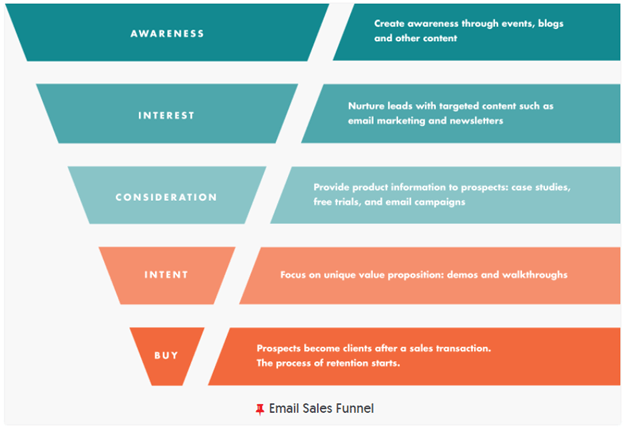 Understanding The Basics Of Email Marketing ROI
Understanding The Basics Of Email Marketing ROI
Firstly, let’s define what exactly email marketing ROI is. Email marketing ROI is a metric that measures the return on investment generated from your email marketing campaigns.
It quantifies the effectiveness of your email marketing efforts in driving revenue, customer engagement, and other desired outcomes.
Email marketing ROI is a crucial aspect of any successful marketing strategy.
It provides valuable insights into the performance of your email campaigns and helps you understand their impact on your business. By analysing the ROI, you can determine the effectiveness of your email marketing efforts and make informed decisions to improve your strategy.
Now, why is email marketing ROI significant? It allows you to assess your campaigns’ success, identify improvement areas, and make data-driven decisions to optimise your email marketing strategy.
Maximising your email marketing ROI can achieve higher open rates, click-through rates, conversions, and tangible business results.
One of the key benefits of email marketing ROI is that it provides a precise measure of the return on investment for your marketing efforts.
This allows you to allocate your resources effectively and focus on campaigns that generate the highest ROI. By understanding which campaigns are performing well and which are not, you can make data-driven decisions to optimise your email marketing strategy.
Additionally, email marketing ROI helps you identify areas for improvement. By analysing the ROI of your campaigns, you can identify any gaps or weaknesses in your strategy. This could be anything from low open rates to high unsubscribe rates.
Once you have recognised these areas, you can take steps to address them and improve the overall performance of your email marketing campaigns.
Furthermore, email marketing ROI provides valuable insights into customer engagement. You can understand how your customers interact with your emails by analysing the ROI.
Are they opening them? Are they clicking on the links? Are they making purchases? These insights can help you tailor your email content and design to engage your audience better and drive higher conversions.
In conclusion, email marketing ROI is a crucial metric that allows you to assess the effectiveness of your email marketing campaigns. By analysing the ROI, you can make data-driven decisions to optimise your strategy, improve customer engagement, and achieve tangible business results.
So, regularly monitor and analyse your email marketing ROI to stay ahead in the competitive digital landscape.
 Critical Factors Affecting Email Marketing ROI
Critical Factors Affecting Email Marketing ROI
Several factors can influence your email marketing ROI. Understanding these factors can enable you to make strategic decisions to improve your results. Let’s explore three key factors:
Quality Of Your Email List
An effective email list is the foundation of successful email marketing. Building a high-quality email list filled with engaged subscribers genuinely interested in your products or services is crucial.
One way to ensure the quality of your email list is to avoid purchasing email lists or resorting to unethical practices. These practices can harm your sender’s reputation and deliverability rates, ultimately affecting your email marketing ROI.
Instead, growing your email list organically is recommended by offering valuable content and incentives to attract and retain subscribers.
By providing valuable content, such as informative articles, helpful tips, or exclusive offers, you can entice potential subscribers to join your email list. Additionally, implementing a double opt-in process can help ensure that only interested individuals become subscribers, further enhancing the quality of your list.
Content Relevance And Personalisation
The content you send your subscribers should be highly relevant to their interests and needs. Personalisation plays a vital role in increasing email engagement and conversions.
Segmenting your email list is one way to achieve content relevance and personalisation. By dividing your subscribers into different groups based on their preferences, past purchase behaviour, or demographic data, you can tailor your messages to cater to their specific needs.
For example, if you run an online clothing store, you can create segments based on gender, age, or style preferences. This allows you to send targeted emails featuring products more likely to resonate with each segment, increasing the chances of conversion.
Furthermore, analysing the data you have collected from your subscribers can provide valuable insights into their preferences and behaviours.
By leveraging this data, you can create highly targeted, personalised campaigns that speak directly to your audience, fostering a stronger connection and driving better results.
Timing And Frequency Of Emails
Timing is everything in email marketing. Sending your emails at the optimal time your subscribers are most likely receptive can significantly impact your email marketing ROI.
Consider factors such as time zones, the nature of your industry, and your target audience’s preferences when determining the best time to send your emails.
For example, if you have a global audience, it’s essential to take into account the different time zones to ensure that your emails reach subscribers at a convenient time for them.
Additionally, finding the right balance in email frequency is crucial. Bombarding your subscribers with too many emails can lead to unsubscribes or disengagement while sending too few can result in missed opportunities.
Regularly monitoring email engagement metrics, such as open rates, click-through rates, and unsubscribe rates, can provide valuable insights into the effectiveness of your email timing and frequency strategy.
By analysing these metrics, you can refine your approach and ensure you deliver your messages at the right time and frequency to maximise engagement and conversions.
By considering the quality of your email list, content relevance and personalisation, and the timing and frequency of your emails, you can make strategic decisions to improve your email marketing ROI.
Email marketing is an ongoing process that requires constant evaluation and optimisation to achieve the best results.
Strategies To Improve Email Marketing ROI
Now that we have explored the key factors let’s discuss some practical strategies to maximise email marketing ROI:
Segmenting Your Email List
Segmentation allows you to divide your email list into smaller, targeted groups based on specific criteria, such as demographics, purchase history, or engagement level. You can increase engagement and conversions by sending more relevant content to each segment.
For example, if you have an online clothing store, segmenting your email list based on gender can help you tailor your messages to address each segment’s unique needs and interests.
You can significantly improve your ROI by emailing clothing recommendations specifically for men or women.
Furthermore, you can also segment your list based on purchase history. By sending personalised emails to customers who have previously made a purchase, you can recommend related products or offer exclusive discounts, increasing the chances of repeat purchases and boosting your ROI.
Optimising Email Design For Better Engagement
The design of your emails plays a vital role in capturing your subscribers’ attention and conveying your message effectively. Optimise your email design using visually appealing images, clear and concise copy, and a mobile-responsive layout.
Consider using eye-catching call-to-action buttons that entice your subscribers to take action.
For example, if you promote a limited-time offer, use a bold and vibrant button that says “Shop Now” to create a sense of urgency and encourage immediate engagement.
Personalisation elements can also enhance engagement. Addressing subscribers by their first name in the email subject line or body can create a sense of exclusivity and relevance, making them more likely to open and interact with your emails.
Testing different designs and layouts can help you identify what resonates best with your audience.
Experiment with different colour schemes, font styles, and email structures to find the perfect combination that captures attention and aligns with your brand identity.
A/B Testing Your Email Campaigns
A/B testing, or split testing, is a valuable technique to optimise your email marketing campaigns. Test subject lines, email copy, CTAs, and visuals to determine which variations drive higher engagement and conversions.
For instance, you can send two versions of the same email to a small portion of your email list. One version can have a straightforward subject line, while the other can have a more creative and attention-grabbing subject line.
By analysing each version’s open rates and click-through rates, you can determine which subject line resonates better with your audience and use that knowledge to improve your overall email marketing ROI.
Additionally, you can experiment with different email copies and visuals. Test different messaging tones, lengths, and imagery to see which combination generates the highest engagement. Continuously analyse the results and implement the most effective elements. You will refine your email marketing strategy and achieve better ROI over time.
 Measuring And Analysing Email Marketing ROI
Measuring And Analysing Email Marketing ROI
Measuring and analysing your email marketing ROI is crucial for tracking progress and making informed decisions. Let’s explore how you can effectively do this:
Tools For Tracking Email Marketing ROI
Several tools help you measure and track your email marketing ROI. Utilise an email marketing platform that provides comprehensive analytics to monitor key metrics such as open rates, click-through rates, conversion rates, and revenue generated.
Additionally, Google Analytics can provide insights into website traffic and conversions resulting from your email campaigns.
When tracking email marketing ROI, it’s crucial to have a holistic approach. Don’t just rely on one tool or metric. Instead, use different tools and metrics to get a complete picture of your email campaign’s performance.
This will enable you to make more accurate assessments and informed decisions.
One tool that can be particularly useful is heat mapping software. Heat maps allow you to visualise how users interact with your emails by showing where they click, how far they scroll, and which parts of your email they spend the most time on.
This information can help you identify areas for improvement and optimise your email design and layout for better engagement.
Interpreting The Data
Once you have the data, it’s essential to analyse and interpret it to gain actionable insights. Look for patterns and trends in your email performance metrics to identify what’s working and what isn’t.
Consider metrics like engagement rates across different segments, conversion rates for various campaign types, and revenue per email. This analysis will guide you in optimising your email marketing strategy for maximum ROI.
However, data interpretation is more than just looking at numbers and percentages. It’s also about understanding the context behind the data.
For example, if you notice a sudden drop in open rates, it could be due to a technical issue with your email service provider or a change in your subscribers’ preferences. By digging deeper and investigating the root cause, you can take appropriate actions to rectify the situation and improve your ROI.
Another aspect of data interpretation is benchmarking. Compare your email marketing performance against industry averages and historical data to see how you stack up.
This will give you a better understanding of where you stand and what areas to focus on to achieve better results.
Making Data-Driven Decisions For Future Campaigns
Based on the insights gained from data analysis, make data-driven decisions to improve future email campaigns. Continuously adapt your strategy by implementing the best-performing elements, experimenting with new approaches, and staying up-to-date with industry trends. Regularly review your email marketing ROI to assess the effectiveness of your actions and make necessary adjustments to ensure ongoing success.
Remember that data-driven decision-making is an ongoing process. It’s not a one-time thing.
As your business evolves and customer preferences change, you must constantly analyse and adjust your email marketing strategy to stay ahead of the curve. This requires a combination of creativity and data analysis skills.
Furthermore, be bold, think outside the box and try new things. Innovation is vital to standing out in a crowded inbox.
Experiment with different subject lines, email formats, and personalisation techniques to capture your audience’s attention and drive better results. Always test your changes before implementing them on a larger scale to minimise potential risks.
In conclusion, maximising your email marketing ROI requires a strategic approach, continuous optimisation, and data-driven decision-making.
By understanding the basics, focusing on critical factors like email list quality, content relevance, and timing, implementing effective strategies, and measuring your results, you can unlock the full potential of email marketing for your business.
Start applying these strategies today and watch your email marketing ROI soar!
Frequently Asked Questions About Email Marketing
What Is The Average ROI For Email Marketing?
The average ROI for email marketing often cited is $38 for every $1 spent, which translates to a 3800% ROI. However, this can vary widely depending on the industry, target audience, and email strategy implemented.
Is Email Marketing ROI 42000%?
The figure of 4200% (not 42000%) or $42 for every $1 spent is a commonly quoted statistic regarding the high ROI potential of email marketing. It underscores the idea that email marketing, when done right, can offer remarkable returns. However, actual ROI figures can fluctuate based on various factors.
What Is an Example of ROI For Email Marketing?
Let’s say a company spends #500 on an email marketing campaign, including tools, design, and copywriting costs. If the campaign generates £2,500 in sales, then the ROI can be calculated as [($2,500 – $500) / $500] x 100 = 400% ROI.
Is Email Marketing Still Profitable?
Yes, email marketing remains a highly profitable channel for many businesses. With its ability to directly engage a curated audience, offer personalised content and nurture leads, email marketing often delivers higher conversion rates than other digital marketing channels. However, its success depends on the quality of the email list, content relevance, and overall strategy.
How Do I Increase Email ROI?
- Segment Your List: Tailor your messages to specific audience groups for better relevance.
- Personalise Content: Use data to personalise emails, making them more engaging for recipients.
- Optimise Design: Ensure emails are mobile-responsive and visually appealing.
- Test & Analyse: Regularly A/B test email components (like subject lines) and use analytics to refine strategies.
- Improve Email Deliverability: Ensure your emails don’t land in spam by maintaining a clean email list, optimising content, and adhering to best practices.
- Offer Value: Provide valuable content or incentives to engage and retain subscribers.

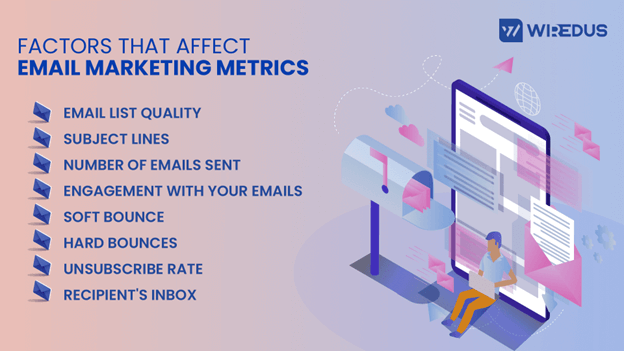 Critical Factors Affecting Email Marketing ROI
Critical Factors Affecting Email Marketing ROI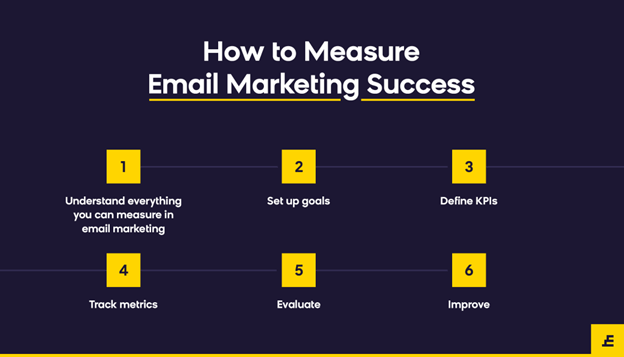 Measuring And Analysing Email Marketing ROI
Measuring And Analysing Email Marketing ROI

